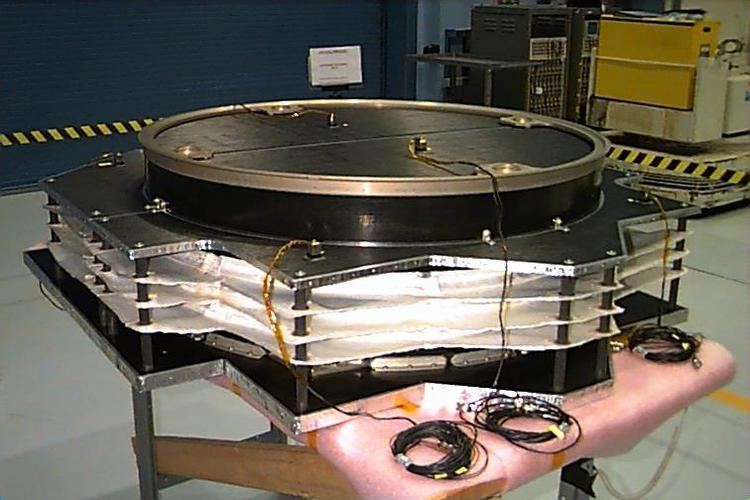 | ||
The Whipple shield or Whipple bumper, invented by Fred Whipple, is a type of hypervelocity impact shield used to protect manned and unmanned spacecraft from collisions with micrometeoroids and orbital debris whose velocities generally range between 3 and 18 kilometres per second (1.9 and 11.2 mi/s).
As opposed to monolithic shielding of early spacecraft, Whipple shields consist of a relatively thin outer bumper placed a certain distance off the wall of the spacecraft. This improves the shielding-to-mass ratio, critical for spaceflight components, but also increases the thickness of the spacecraft walls, which is not ideal for fitting spacecraft into launch vehicle fairings. The advantage of a bumper placed at a standoff over a single thick shield is that the bumper wall can shock the incoming particle and cause it to disintegrate. This spreads out the impulse of the particle over a larger area of the inner wall of the spacecraft.
There are several variations on the simple Whipple shield. Multi-shock shields, like the one used on the Stardust spacecraft, use multiple bumpers spaced apart to increase the shield's ability to protect the spacecraft. Whipple shields that have a filling in between the rigid layers of the shield are called stuffed Whipple shields. The filling in these shields is usually a high-strength material like Kevlar or Nextel aluminium oxide fiber. The type of shield, the material, thickness and distance between layers are varied to produce a shield with minimal mass that will also minimize the probability of penetration. There are over 100 shield configurations on the International Space Station alone, with higher-risk areas having better shielding.
